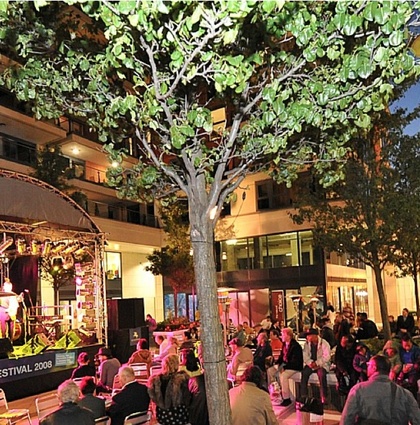
"Happier, safer and more neighbourly" - these are the headline findings from new research carried out by Social Life and Professor Tim Dixon from Reading University for The Berkeley Group, investigating quality of life and community strength in new housing developments. The research challenges the popular notion that new housing developments are less sociable and attractive places to live than older, more established communities.
Berkeley commissioned Social Life and Reading University to develop a social sustainability measurement framework and then test this on four developments across London and the South-East built in the last ten years. Social sustainability is a term more widely used by academics than housebuilders or planners. The social aspect of sustainability often gets lost in wider discussions, it can be easier for built environment professionals to focus on economic or environmental issues rather than the softer and less quantifiable issues of community strength and capacity, and quality of life. But understanding the lived experience of residents in new housing developments, and under what circumstances they come together in well functioning communities, matters. It is vital if we are to find better ways of making sure that the new homes we build today become successful communities of tomorrow, rather than costly problems.
The framework assessed three critical dimensions of the developments: their "amenities and social infrastructure"; "social and cultural life", and residents "voice and influence". A survey of residents and a site survey were commissioned to feed into this. Questions explored residents' perceptions of crime, whether they felt they could influence what happens in the area, how they think people from different backgrounds get on, whether they know and trust their neighbours, and their wellbeing.
The results challenge the popular stereotype that new developments are less sociable and attractive places to live than older, more established communities. The survey found that, compared to comparable areas, Berekelys residents are more likely to feel they belong in their neighbourhoods, and more likely to regularly talk to their neighbours. They plan to stay in the community longer and are more likely to feel safe.
The housebuilding industry has made significant progress in improving the environmental performance and design quality of new housing and public spaces in the past 10 years. The challenge now, for all the many stakeholders involved in creating new developments, from local authorities to communities, architects, developers and housing associations, is to build on this progress and ensure that new housing routinely creates strong communities, and that this becomes the norm, the standard that is expected.
The riots of August 2011 starkly illustrated the fragility of many inner city neighbourhoods. We need to make sure that new places and neighbourhoods become thriving and resilient. Social sustainability matters regardless of the income and social class of residents: neighbourhoods where people are isolated and miserable will not thrive, regardless of the incomes of the those who live there.
Government planning policy, set out in the 2012 National Planning Policy Framework (NPPF), is based on a presumption in favour of sustainable development. But sustainability means more than environmental and economic considerations - and local authorities and local communities will be looking for evidence that proposed new developments will deliver positive social outcomes. They will want clarity about the ways that new housing will create flourishing communities, rather than contribute in the longer term to social problems and financial costs.
Although many promise to build new places that will enhance people's quality of life, very few offer evidence about how this can be achieved. This research shows that it is possible to quantify the social aspects of sustainability, and help us build the practical knowledge to understand what needs to be put in place to enable communities that thrive, starting with a focus on the 'soft infrastructure' that enables neighbours to get to know each other, and underpins a sense of local identity and belonging.
The next step is to explore how this emerging knowledge can be put into practice and inform the way that new developments are built. Social sustainability is relevant throughout the process of site development, from the point of site selection onwards. A social sustainability framework can be used to inform and enrich planning decisions, to enable communities and councils to understand how new developments will contribute to wider neighbourhoods, building community strength and boosting quality of life for everyone in the neighbourhood.
The report was written by Nicola Bacon, Douglas Cochrane, and Saffron Woodcraft, with statistical analysis and survey design by John Brown.